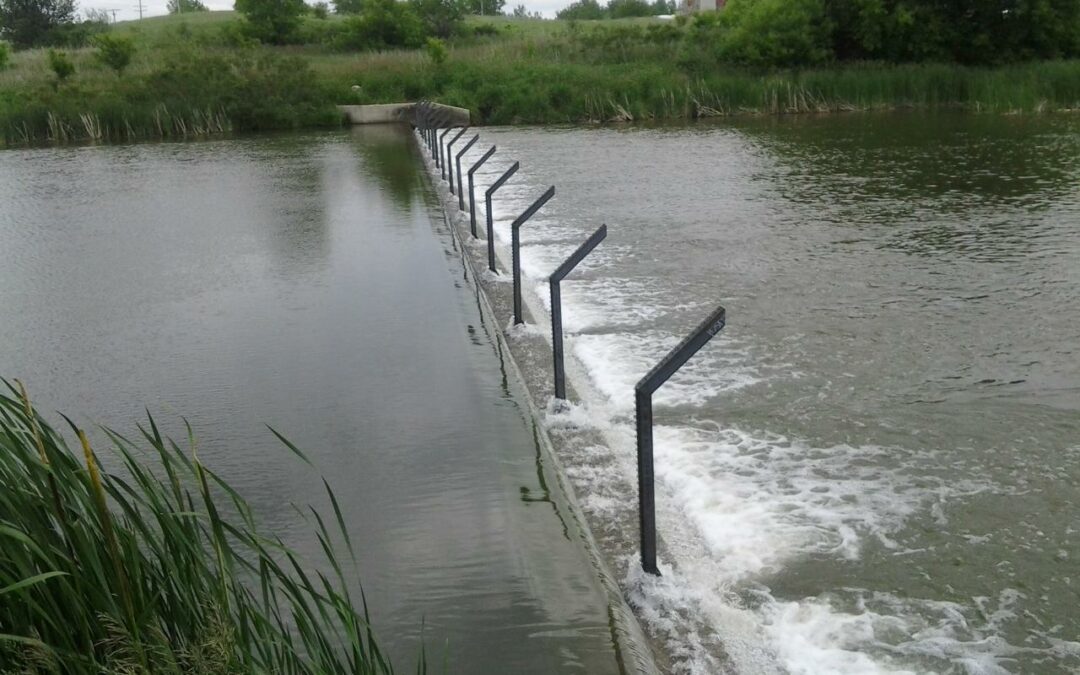Local efforts have been instrumental in the continued fight against invasive species in the Iowa Great Lakes. This week, a temporary fish barrier is being installed at the Lower Gar Outlet to protect the area from further Asian carp infestation while the design and contracting for a more permanent fish barrier project continues.
“Our thanks go out to Kevin Vaughan, Iowa Great Lakes Association Board Member, for encouraging the DNR, providing the leadership, and contributing the money to pay for it,” said Bill Van Orsdel, president of the Iowa Great Lakes Association. “This is a major accomplishment to protect our lake until the permanent fish barrier is installed.”
Efforts are well under way to install a permanent electric fish barrier to protect the Iowa Great Lakes from Asian carp, an invasive species often referred to as “jumping fish.” In late March, a commercial fishing company caught 55 silver carp and 82 big head carp in East Lake Okoboji. Studies show high water events have allowed this invasive species to find its way into the Iowa Great Lakes. Flood events last summer allowed the fish to navigate the Little Sioux River past the Linn Grove Dam, landing at the doorstep of the Iowa Great Lakes.
As the DNR works on the permanent barrier, the temporary barrier will provide some protection from Asian carp should high water events occur again this year.
“After consulting with engineers, local contractors and biologists, we have come up with a design for a temporary barrier,” said Mike Hawkins, Fisheries Management Biologist for the Iowa Department of Natural Resources. “This has been no easy task, and we have no guarantees that the design will work effectively, but we want to make sure we to do everything possible to stop Asian carp from moving before the installation of the permanent barrier.”
According to Hawkins, the challenges of placing a barrier in a moving stream are quite complex. It must be able to stand up to incredible water pressures and cause as little plugging as possible while not being so complicated it takes months to fabricate and install.
“The spacing required to stop these fish is not known so we are using our best science to make a guess,” said Hawkins. “The temporary barrier is predicted to require nearly continuous monitoring to prevent plugging, and we have made a decision that as water levels rise, it may need to be removed when it becomes too dangerous to maintain. It is not a perfect solution, but could prevent movement of fish during low to moderate flows. It will be removed when the electric barrier is in place.”
The DNR is currently in the design and engineering phase for the electric fish barrier. Construction is currently scheduled to begin in late October of this year.


